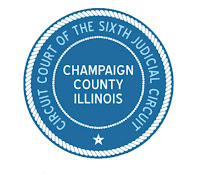There has been a mountain of news and updates since our last COVID update post a week ago. That Cheat Sheet post highlighted that officials were announcing sustained reductions in cases, hospitalizations and thus reduced mitigations. Soon after that, Region 6, including Champaign County, returned to Phase 4 guidance without additional mitigation. From the News-Gazette:
Region 6 has moved out of the state’s Tier 1 COVID-19 mitigation restrictions to the less restrictive Phase 4.
The Illinois Department of Public Health announced the change Thursday morning for the 21-county region that includes Champaign, Douglas, Ford, Piatt and Vermilion counties.
The change was based on improving COVID-19 metrics for the region, including a test-positivity rate of 6.5 percent for three consecutive days, plus staffed intensive care unit bed capacity of 20 percent or more for three consecutive days and no sustained increase in COVID-19 patients in the hospital for seven out of 10 days.
That full article here. The previous Cheat Sheet post had a description and links for the recovery Phases and mitigation Tiers to get back on track after outbreaks. For additional local data and vaccine information check out the C-UPHD coronavirus data page and vaccination dashboard. The return to Phase 4 has meant less restrictions on everything from indoor dining to libraries to sports. Here are just some of the stories on loosening restrictions in the area:
- Youth Sports opening back up from the News-Gazette. There was also an earlier article prior to the decision explaining the metrics and the why.
- Impacts of Phase 4 on campus from the Daily Illini.
- The University Chancellor is pleading with students to adhere to the remaining safety guidance after some concerns were raised by long lines. Coverage by WCIA here. The student infection rate is still far lower than the general community at this time with the News-Gazette reporting its "seven-day positivity rate held at 0.3 percent."
- Champaign Park District and Urbana Park District resuming some indoor activities, reported by Smile Politely.
- Public libraries in Champaign and Urbana have limited openings as reported by the News-Gazette.
- Some students and teachers at Unit 4 are able to start signing up for vaccinations according to the News-Gazette today. WCIA had more coverage here.
- WICS had an article on the overwhelming demand in Champaign County and surrounding areas.
- Illinois Newsroom had coverage about building trust with agricultural workers and migrant communities with outreach on the vaccine.
- The Pantagraph had coverage on vaccine delays and nursing homes.
- WICS also had updates on a new Illinois State portal on COVID vaccination information.
- The Daily Illini took a look at the possible student vaccination timeline.
- The Daily Illini also had an overview of the local vaccination push in Champaign County.
- There is now a memorial established by the Unitarian Universalist church for those lost to the pandemic locally. Reporting from WICS.
- The IFT teachers union has announced a COVID tracker on its website according to WICS.
- The University of Illinois Board of Trustees says it is still waiting on FDA approval for expanding its testing to more people according to the News-Gazette.
- WCIA had coverage on continued visitor restrictions at local hospitals.
- WCIA and WAND had coverage on the University's "Party Patrol" to help ensure adherence to pandemic guidance.
- The University's "Mom's Weekend" in-person activities were canceled, also from WICS.
- The Daily Illini had an overview of local COVID trends while students were gone.
- There was coverage on how COVID is still impacting "Restaurant Week" events locally in the Daily Illini and WCIA.
















